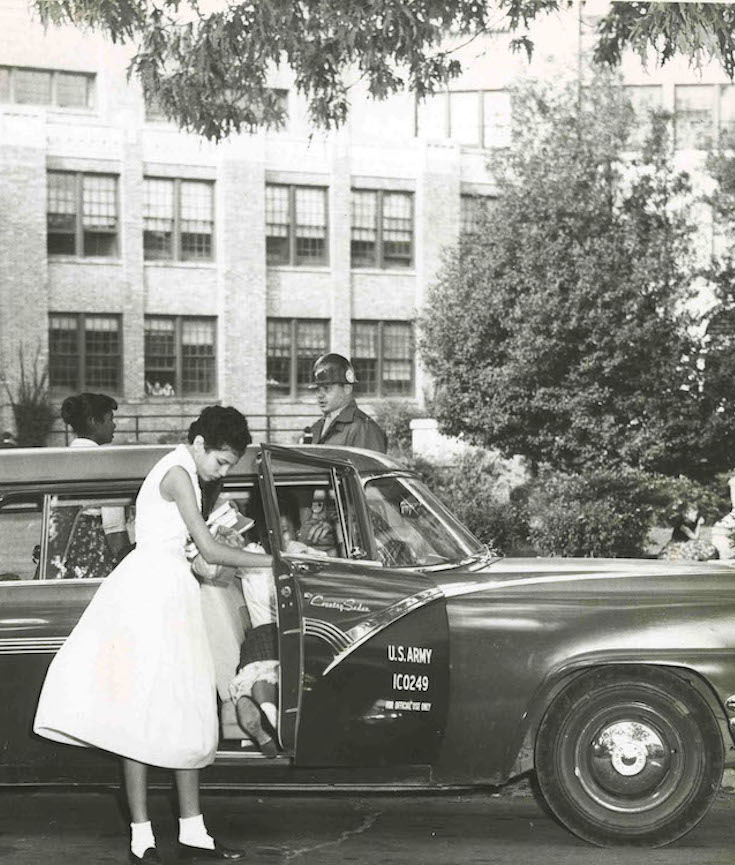[dropcap]In[/dropcap] the galleries of the Smithsonian’s National Museum of African American History and Culture, a singular black dress, printed with blue, white and sea-green letters and patterns, is on display. It seems more than appropriate attire for a young lady’s first day of school.
The dress once belonged to Carlotta Walls LaNier, who with eight other African Americans integrated Little Rock’s Central High school for the first time in September of 1957—an act that made the Little Rock Nine an indelible part of this nation’s contentious history.
“It was not an easy task, but we didn’t expect it to be as it turned out,” LaNier recalls. “You have to learn how to deal with adversity, and I think we all did.”
Adversity doesn’t seem quite a strong enough word to describe the experience of black teenagers braving an angry white mob of segregationists to go to school the morning of September 4, 1957, only to be turned away by armed Arkansas National Guardsmen under orders from Governor Orval Faubus.
[mc4wp_form id=”6042″]
 Wikimedia/U.S. Army | Photo Credit
Wikimedia/U.S. Army | Photo Credit
 NMAAHC, gift of Carlotta Walls LaNier | Photo Credit
NMAAHC, gift of Carlotta Walls LaNier | Photo Credit
 NMAAHC, gift of Elmer J. Whiting, III ©Gertrude Samuels | Photo Credit
NMAAHC, gift of Elmer J. Whiting, III ©Gertrude Samuels | Photo Credit
 Library of Congress | Photo Credit
Library of Congress | Photo Credit
NATIONAL MUSEUM OF AFRICAN AMERICAN HISTORY & CULTURE | WASHINGTON, DC
The National Museum of African American History and Culture is the only national museum devoted exclusively to the documentation of African American life, history, and culture. It was established by Act of Congress in 2003, following decades of efforts to promote and highlight the contributions of African Americans. To date, the Museum has collected more than 36,000 artifacts and nearly 100,000 individuals have become charter members. The Museum opened to the public on September 24, 2016, as the 19th and newest museum of the Smithsonian Institution. (Biography.com).



You must be logged in to post a comment.